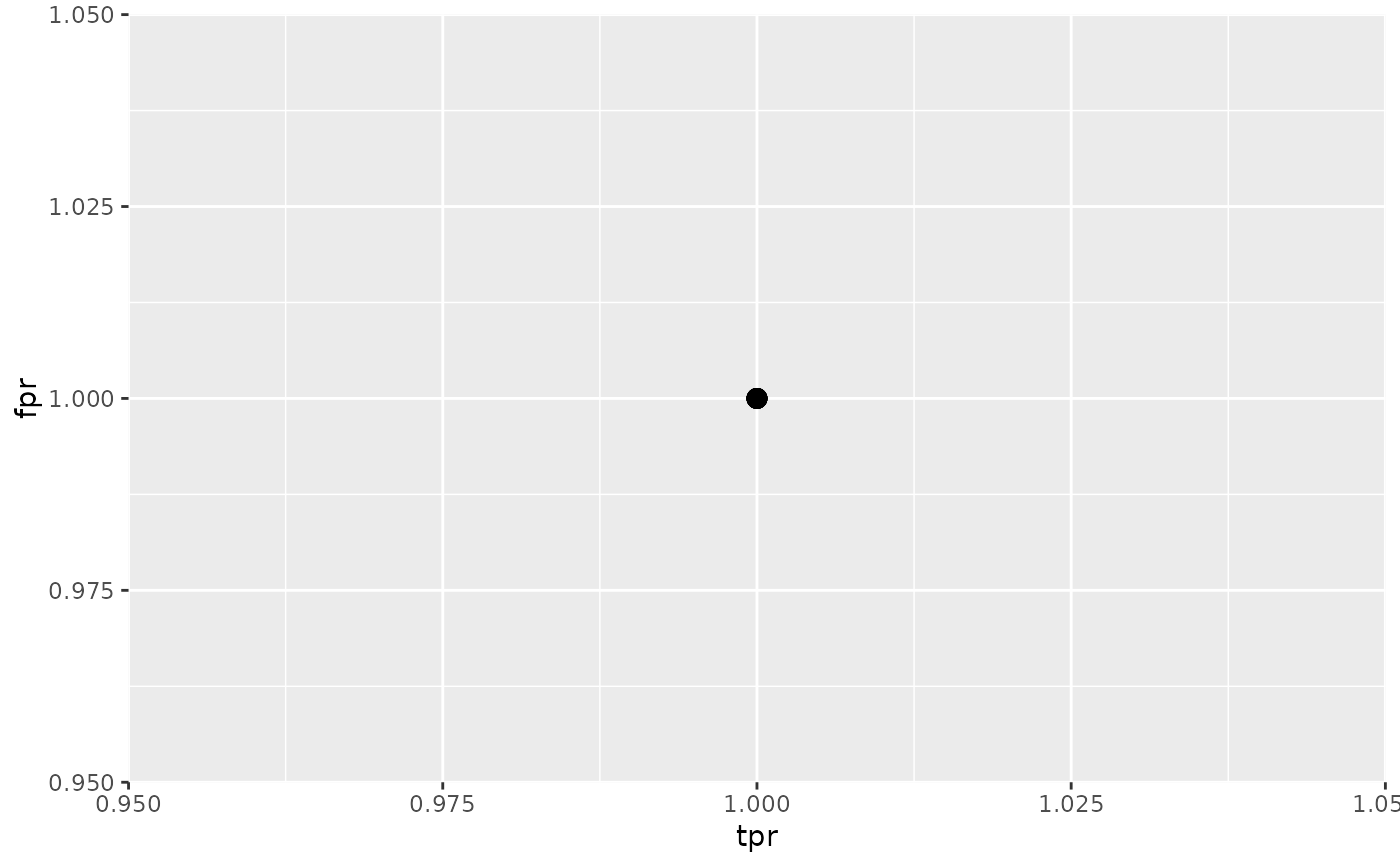
Hyperparameter tuning for multiple measures at once.
Source:R/tuneParamsMultiCrit.R
tuneParamsMultiCrit.RdOptimizes the hyperparameters of a learner in a multi-criteria fashion. Allows for different optimization methods, such as grid search, evolutionary strategies, etc. You can select such an algorithm (and its settings) by passing a corresponding control object. For a complete list of implemented algorithms look at TuneMultiCritControl.
Usage
tuneParamsMultiCrit(
learner,
task,
resampling,
measures,
par.set,
control,
show.info = getMlrOption("show.info"),
resample.fun = resample
)Arguments
- learner
(Learner |
character(1))
The learner. If you pass a string the learner will be created via makeLearner.- task
(Task)
The task.- resampling
(ResampleInstance | ResampleDesc)
Resampling strategy to evaluate points in hyperparameter space. If you pass a description, it is instantiated once at the beginning by default, so all points are evaluated on the same training/test sets. If you want to change that behavior, look at TuneMultiCritControl.- measures
[list of Measure)
Performance measures to optimize simultaneously.- par.set
(ParamHelpers::ParamSet)
Collection of parameters and their constraints for optimization. Dependent parameters with arequiresfield must usequoteand notexpressionto define it.- control
(TuneMultiCritControl)
Control object for search method. Also selects the optimization algorithm for tuning.- show.info
(
logical(1))
Print verbose output on console? Default is set via configureMlr.- resample.fun
(closure)
The function to use for resampling. Defaults to resample and should take the same arguments as, and return the same result type as, resample.
See also
Other tune_multicrit:
TuneMultiCritControl,
plotTuneMultiCritResult()
Examples
# \donttest{
# multi-criteria optimization of (tpr, fpr) with NGSA-II
lrn = makeLearner("classif.ksvm")
rdesc = makeResampleDesc("Holdout")
ps = makeParamSet(
makeNumericParam("C", lower = -12, upper = 12, trafo = function(x) 2^x),
makeNumericParam("sigma", lower = -12, upper = 12, trafo = function(x) 2^x)
)
ctrl = makeTuneMultiCritControlNSGA2(popsize = 4L, generations = 1L)
res = tuneParamsMultiCrit(lrn, sonar.task, rdesc, par.set = ps,
measures = list(tpr, fpr), control = ctrl)
#> [Tune] Started tuning learner classif.ksvm for parameter set:
#> Type len Def Constr Req Tunable Trafo
#> C numeric - - -12 to 12 - TRUE Y
#> sigma numeric - - -12 to 12 - TRUE Y
#> With control class: TuneMultiCritControlNSGA2
#> Imputation value: -0Imputation value: 1
#> [Tune-x] 1: C=0.0036; sigma=0.207
#> [Tune-y] 1: tpr.test.mean=1.0000000,fpr.test.mean=1.0000000; time: 0.0 min
#> [Tune-x] 2: C=0.072; sigma=0.244
#> [Tune-y] 2: tpr.test.mean=1.0000000,fpr.test.mean=1.0000000; time: 0.0 min
#> [Tune-x] 3: C=0.0384; sigma=2.73
#> [Tune-y] 3: tpr.test.mean=1.0000000,fpr.test.mean=1.0000000; time: 0.0 min
#> [Tune-x] 4: C=0.00326; sigma=1.99e+03
#> [Tune-y] 4: tpr.test.mean=1.0000000,fpr.test.mean=1.0000000; time: 0.0 min
#> [Tune-x] 5: C=0.338; sigma=0.207
#> [Tune-y] 5: tpr.test.mean=1.0000000,fpr.test.mean=1.0000000; time: 0.0 min
#> [Tune-x] 6: C=0.00335; sigma=0.244
#> [Tune-y] 6: tpr.test.mean=1.0000000,fpr.test.mean=1.0000000; time: 0.0 min
#> [Tune-x] 7: C=0.0882; sigma=0.145
#> [Tune-y] 7: tpr.test.mean=1.0000000,fpr.test.mean=1.0000000; time: 0.0 min
#> [Tune-x] 8: C=0.00267; sigma=1.99e+03
#> [Tune-y] 8: tpr.test.mean=1.0000000,fpr.test.mean=1.0000000; time: 0.0 min
#> [Tune] Result: Points on front : 8
plotTuneMultiCritResult(res, path = TRUE)
 # }
# }